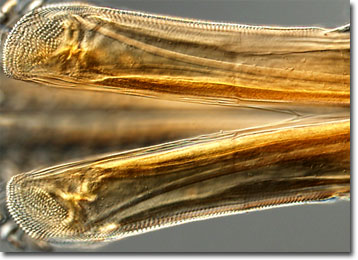Differential Interference Contrast Image Gallery
Lone Star Tick (Amblyomma americanum)
The lone star tick gained its common name from the prominent iridescent spot that can be found on the backs of female members of the species. Scientifically known as Amblyomma americanum, lone star ticks most heavily inhabit the southeastern United States, but may live as far north as Rhode Island.

Many animals are potential hosts for the lone star tick, which needs three blood meals in order to develop into its adult form. In their immature stages, the ticks prefer to feed on birds and small mammals, though they may also feed on larger animals. Bovines and white-tailed deer are favorite hosts of fully mature lone star ticks. All life stages of the creatures, however, will feed on humans as well.
To feed, the lone star tick attaches to its host's skin via specialized mouthparts and may remain there for hours or even days. The bite of the parasite, though not initially felt, may become painful and can cause localized swelling and inflammation. Moreover, the parasite is capable of transmitting certain diseases, including Rocky Mountain spotted fever, Q fever, tularemia, Lyme disease, and ehrlichiosis, which is a condition that affects white blood cells.
